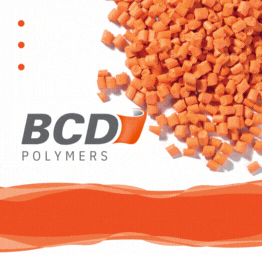Which packaging is the best, and which should be avoided from an ecological point of view? This question is not only the subject of political and social discussions: it is also something that concerns many consumers when they go shopping. After all, as even the example of those shops that only sell unpackaged goods clearly shows, it is not possible to transport sensitive goods – like food – without packaging. And not only for logistical reasons: packaging also protects products from damage and premature spoilage.
NABU commissioned ifeu Institute for Energy and Environmental Research to compare commercially available forms of packaging for nine food products. The authors of the study also considered reusable forms of packaging that are already established in practice. The packaging was analysed in terms of its impact on three major ecological problems of our time.
As part of the study, ifeu conducted a so-called life cycle assessment screening for each food or packaging. Comprehensive life cycle assessments that refer to a specific product from a specific supplier were not prepared. Instead, the scientists used known average values for the respective products: these included material, weight, place of manufacture, transport distances as well as disposal and recycling. The analyses of the environmental impacts of the various forms of packaging considered three important ecological problem areas: climate change in the form of greenhouse gases, non-renewable resource consumption and pollutant emissions into the atmosphere and water. The assessment covered all relevant life cycle stages from the provision of the necessary raw materials through to the final disposal of all components of the packaging.
The balance at the end of the investigations showed that there is no such thing as the optimal packaging for all products. Rather, the best possible packaging depends on the specific application. Accordingly, it cannot be said that certain packaging materials are to be regarded as particularly ecologically beneficial or, conversely, that others are not. Rather, the results were only clear in one respect: a packaging material can have ecological benefits as well as disadvantages, i.e. it can perform very well for one product to be packaged and very poorly for another. NABU found that it always depends on the alternative materials available.
In the opinion of the authors of the ifeu study, it cannot be said, for example, that paper is generally more environmentally friendly than plastic. This is because the production of paper and cardboard packaging consumes a lot of water, energy and chemicals. Moreover, paper is not suitable for wrapping food containing fat and/or moisture. And as the environmental organisation points out, cardboard boxes – such as those for pasta, muesli and chocolate – and paper bags for fruit and vegetables have a very high climate impact compared to their plastic competitors.
When it comes to disposable packaging made of glass or metal, ifeu rates both materials as being “consistently problematic” in its study for NABU. They scored by far the worst in almost all categories. NABU explains that this is due to the very high weight of the packaging and the associated CO₂ and pollutant emissions during production and transport. The high recycling rates that are often used to promote these packaging materials do not alter the situation. The nature and environmental protection organisation says disposable glass has a very green image, which is ultimately unjustified, as it is not a good choice as a packaging material from an ecological point of view.
It emphasises that the recyclability of the respective raw materials is crucial for the environmental assessment of packaging. The better a packaging can be recycled, the better it is for the environment. And as the ifeu experts make abundantly clear, plastic also demonstrates its qualities in this respect when compared with alternative packaging materials. For this reason, they also consider the plastic bashing practised by some so-called environmentalists to be completely inappropriate and not justifiable based on the facts. On the contrary, the experts warn against switching blindly to other materials, like glass or metals, because their production and transport cause even more environmental pollution in some cases.
Therefore, consumers should not be misled by bogus truths or advertising claims such as “plastic-free” or the like when buying packaged products. Instead, they should make sure that their purchase decision supports climate-friendly recycling of raw materials – as recommended by NABU.


